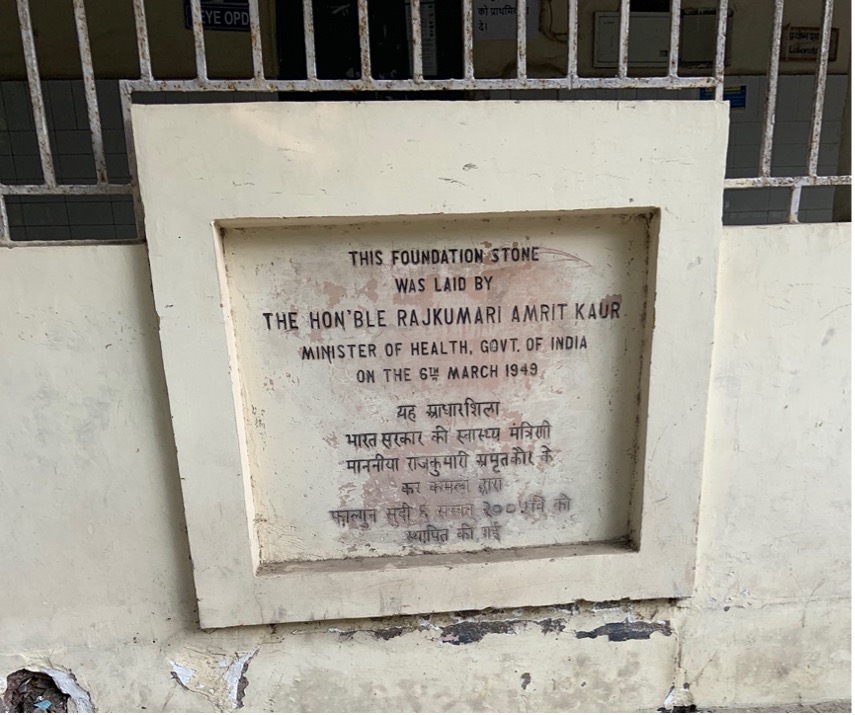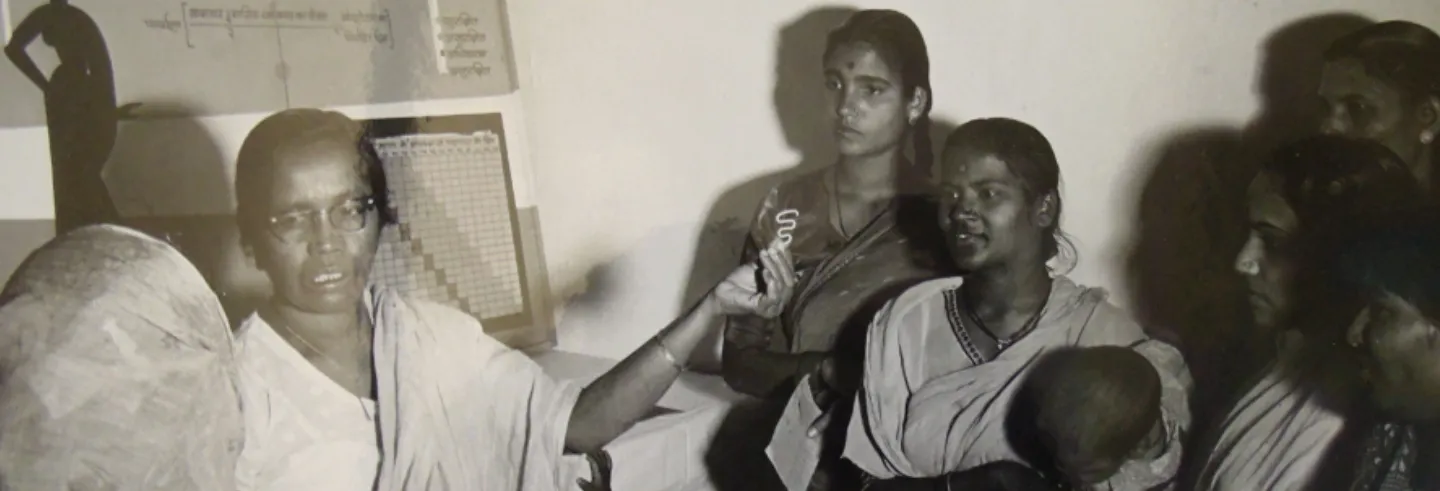The Primary Health Centre (PHC) for Najafgarh, in western Delhi, has a unique place in India’s history of public health. As a plaque on a wall next to the emergency unit informs visitors, its foundation stone was laid in 1949, making it the first such centre.
Why would India’s first PHC be established in a moribund periurban village of the national capital territory? The primary reason was that it came upon the same site where the Rockefeller Foundation had established a Rural Health Training Centre in 1937. (The training centre, passed on from the Rockefellers to the Ford Foundation in the 1950s, continues to train nurses and auxiliary nurse midwives.)
The ideal sites would not be drastically different from the urban — as rural India was imagined to be.
But there were deeper calculations that led to places like Najafgarh becoming locations for social experimentation. Sites like the Rural Health Training Centre were structured to help enable a process of urbanisation. In the records of the Rockefeller Foundation, Najafgarh, then a village 15 miles west of Delhi, was described as “reached easily by a good road.” Iterations of this ‘ease of access’ were present across multiple documents from the 1930s till the 1960s. Funders, demographers, and bureaucrats were looking to examine communities from the perspective of demographic transition. The village had to have enough contact with urbanity to make it possible for its householders to imagine a life beyond thatched roofs. The ideal sites would not be drastically different from the urban — as rural India was presumed to be. Najafgarh, on the agrarian ring around Delhi, exhibited classic 'rural' characteristics without being too far away from the urban.
In many ways, this periurban space has been a site of continuous experimentations in delivering rural primary healthcare since the 1930s.
Demonstrating modern methods
The Rural Health Training Unit at Najafgarh displayed the overlapping concerns of United States-centred transnational funders and colonial authorities in teaching populations to govern their bodies in a sanitised fashion. Boundaries of authority were overcome as public health folded in rural health training to improve lives and surroundings.
The unit was imagined as a pedagogic site right from its inception:
“to inaugurate sound rural health work of all types in a selected portion of the Province; to demonstrate modern methods of practical approach to rural health problems which may be applicable elsewhere; to serve as a center for practical field experience in all grades of public health; and finally, to set up a modern organization which can be studied by officials and visitors.”
The Rockefellers were aware of the importance of the new unit and the prominence it enjoyed with the colonial government.
Such an imperative to ‘teach’ public health was symptomatic of the way Rockefellers worked in late colonial South Asia
The unit set up magic lantern shows, lectures, and talks on sanitary living conditions. There were vaccination drives for smallpox eradication, especially amongst women. The sanitary inspector of the villages helped set up ‘village aiders’ and ‘malaria guards.’ Apart from setting up borewells and latrines, the Foundation also helped villagers get better maternal and child health care. Births and deaths started being recorded.
What did the villagers think of the initiative? An Urdu poem recited during the visit of Rockefeller officials in 1940 claimed that:
“All our mothers and sisters pray day and night for his [Rockefeller’s] soul, because their houses are now more sanitary, infant mortality rate low and birth of their children safe. This could not have been so in this short time if we had been left alone to help ourselves.”
The making of the 'health visitor'
In the 1950s, as Najafgarh’s funding moved from the Rockefellers to the Ford Foundation, the health unit trained doctors, nurses and health visitors to handle the contingencies of rural social geography. It set up a precedence of what a social worker, the ‘health visitor’ was to undertake. Health visitors, lowest in the hierarchy of the health apparatus, were at once medical personnel but did not possess any specialised skills. What was noteworthy about the unit was that all of its health visitors, recruited from nearby villages, were women. For decades, the centre would churn out personnel for rural healthcare and create a curriculum out of the immediate needs of the surrounding villages surrounding the centre.

The public health nurses attached to the centre had to perform multiple, at times contradictory, duties. They were to provide medical counsel to villages. They also had to collect data from existing records and assist in undertaking nutritional surveys, especially on the mothers and children, especially “local health habits, customs food, fads and fallacy.” They had to develop counselling tools to help mothers raise children and aid in the school’s health services. The health visitors would assist in carrying out experiments in access to public health, “which in addition will also be service to the Najafgarh area and help in the collection of data which will be of value both to the training centre and the Primary Health Centre.”
The impact of the Najafgarh unit was reflected in the first Five Year Plan period (1951-56), when the national medical bureaucracy drew on its model and opened 164 counselling centres to instil the small family norm. These centres became sites through which individual members of the population could be assessed, moulded, and shaped into an imagined citizenry. India’s family planning programme from the 1950s onwards created a form of governance that proved to be a prototype for other health programmes. As infant and maternal care took up centre stage at Najafgarh, training often became insufficient to meet other needs and other diseases. Many rural health programmes depended on the midwife to inform mothers about vaccines or nutritional standards. The reliance on the young mother to perform health care for the family also entailed a feminisation of the nursing staff.
The health visitor was responsible for introducing contraception to people as a practice and an ethic.
Counselling was geared towards finding new modes to propagate the logic of fewer numbers as better for the nation. This notion and the nation would be framed, regulated, and naturalised through these centres. S. Devenath, an undersecretary in the central health ministry, wrote to state governments in 1954 on this capacious vision: “the family planning programme should not be conceived in the narrow sphere of birth control, or merely spacing of children. The purpose of family planning is to promote, as far as possible, the growth of the family as a unit of society in a manner designed to facilitate the fulfilment of those conditions which are necessary for the welfare of this unit from the social, economic, health and cultural points of view.”
The health visitor was intrinsic to inculcating these new social formations. The planners of the counselling centres understood the historical limits of the doctor. Other than discussing the actual modalities of contraceptives, doctors would be unable to engage with a couple undergoing modes of birth control. The health visitor was responsible for introducing contraception to people as a practice and an ethic. Counselling was integrated into the local health services, appended to existing maternity and child welfare clinics. It became the prerogative of social workers to provide counselling on matters like sex education, marriage counselling, marriage hygiene, the spacing of children and family budgeting.
The pedagogic impulse of the state arose out of its faith in the transformational capabilities of women who were teaching other women how to plan their families. A woman was deemed proper for the role, as she could straddle the private issues of a couple with the public concern. Her presence in the room was not seen as upsetting the power hierarchies within the family.
The legacy of Najafgarh
Najafgarh today hardly reflects the reality of a village in rural north India. It has seen modernisation in farming, and education levels have increased drastically. The Delhi metro line now touches Najafgarh, running close enough for some buildings of the PHC campus to shake as trains approach. However, have exceptional public health initiatives like the PHC helped inculcate new citizenry? Have such initiatives erased caste or filial hierarchies? Data would say otherwise.
The Najafgarh campus itself continues to influence medical education, especially of the auxiliary staff.
Yet, its legacy remains in how public health services shaped in India. The Najafgarh campus itself continues to influence medical education, especially of the auxiliary staff. Nurses of several prominent medical colleges in Delhi are trained in the ANM school on the campus. Other training colleges in the country model their curriculum on what is taught in this school. The twin duties of the health visitor — getting the community to the health centre and documenting their health status and access — became foundational to the way national programmes were configured at the level of individual health units. The functions of the public health nurse were worked into the syllabi of the auxiliary nurse midwife school that was later established at Najafgarh.
The stress on ‘teaching’ sanitary behaviour and documenting people’s attitudes and perceptions towards health has made the work of auxiliary nurse midwives hard. Harder still is the work of the ASHA (Accredited Social Health Activist). Mostly women, this cadre of health activists get their fee from the voluntary work to bring people to PHCs and the advocacy they do on behalf of the national programmes. In a direct line with the health visitor’s role, the ASHAs too dispense information and collect data on populations with which they have filial ties.
Aprajita Sarcar is a postdoctoral researcher at the Centre de Sciences Humaines, New Delhi.









